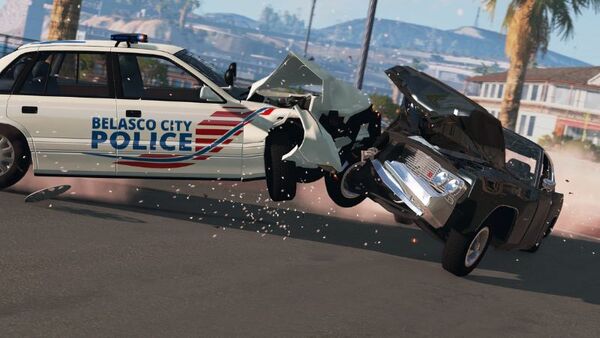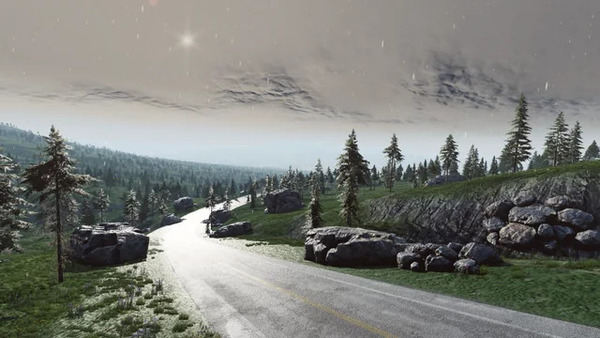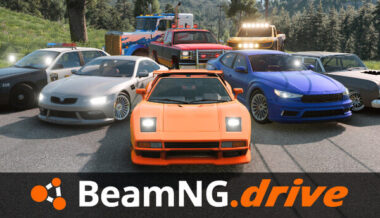Introduction
BeamNG.drive is known for its ultra-realistic vehicle physics and environmental interactions, making it a favorite for simulation enthusiasts. One of the standout features in this game is terrain deformation, where different surfaces affect vehicle handling, suspension, and overall performance. However, handling terrain deformation and navigating varied landscapes can be challenging, especially for players unfamiliar with off-road physics. This article dives into the mechanics of terrain deformation in BeamNG.drive, exploring how surfaces impact driving and how to adjust vehicle setups for better control.
- Understanding Terrain Deformation in BeamNG.drive
In BeamNG.drive, terrain deformation is not just visual; it deeply impacts how a vehicle handles. From sand to rocks and mud, each surface type behaves uniquely, changing the way a vehicle’s tires interact with it.
How Terrain Deformation Affects Gameplay
Terrain deformation goes beyond aesthetics, impacting traction, speed, and control. Realistically simulated, it brings new challenges for each surface, requiring players to adjust driving techniques accordingly.

Terrain deformation goes beyond aesthetics, impacting traction, speed, and control
Surface Types and Their Impact
Each surface type, such as mud, gravel, and tarmac, creates different resistance, influencing how fast a player can accelerate or brake. Understanding these nuances is crucial for effective navigation across BeamNG’s landscapes.
- Vehicle Suspension and Terrain Interaction
Suspension is critical when dealing with uneven terrains. BeamNG’s suspension mechanics are highly detailed, with each vehicle’s suspension reacting differently based on surface type.
Optimizing Suspension for Different Terrains
Vehicles with stiffer suspensions handle rocky terrain better but struggle in sand and mud. On the other hand, softer suspensions absorb rough impacts but can sink on softer ground.
Understanding Suspension Damage
Harsh terrains can lead to suspension damage, which affects handling. Monitoring the suspension status and adapting driving techniques helps avoid severe damage, extending the vehicle’s usability.
- Tire Pressure and Its Role in Terrain Navigation
Tire pressure is often overlooked but significantly affects how vehicles interact with various surfaces. Adjusting tire pressure according to terrain can be a game-changer in BeamNG.drive.
Low Tire Pressure for Better Traction
Reducing tire pressure on loose terrain, such as sand or mud, increases the tire’s surface area, providing better traction and preventing vehicles from sinking.
High Tire Pressure for Firm Surfaces
On rocky or firm terrain, higher tire pressure reduces tire deformation, giving drivers more control and stability. Knowing when to adjust tire pressure is key to effective off-road driving.
- Utilizing Differential Locking for Improved Control
BeamNG.drive offers differential locking options, which can drastically affect how power is distributed to the wheels. Using differential locks wisely can help players navigate rough terrain with better traction.
When to Use Differential Locks
Differential locks are especially helpful on uneven surfaces where one wheel might lose traction. Locking the differential ensures both wheels receive power, minimizing slippage.
Adapting Differential Locks Based on Terrain
Each terrain type requires different differential settings. Gravel roads may require partial locking, while fully locking the differential is ideal for deep mud.
- Managing Traction Control on Loose Surfaces
Traction control systems are designed to prevent wheel spin, but they can sometimes hinder progress on loose or slippery terrain in BeamNG.drive.

Traction control systems are designed to prevent wheel spin, but they can sometimes hinder progress on loose or slippery terrain in BeamNG.drive
Disabling Traction Control for Better Maneuverability
In BeamNG.drive, turning off traction control on loose surfaces like mud or sand allows for more controlled drifts, preventing the system from slowing down the vehicle unnecessarily.
Re-enabling Traction Control on Firm Terrain
On firmer surfaces like asphalt, re-engaging traction control helps prevent unintended wheel spin, providing stability and control during acceleration.
- Off-Road Tire Selection and Customization
Different terrains demand specific tire types. BeamNG.drive offers multiple tire choices, each designed to perform optimally on certain surfaces.
Types of Off-Road Tires Available
The game features mud tires, all-terrain tires, and rock-crawling tires, each suited to different types of terrain. Choosing the correct tire enhances grip and stability in challenging landscapes.
Customizing Tire Width and Tread Patterns
Wider tires distribute weight more evenly, beneficial for sandy or muddy terrains. Tread patterns also matter, with deeper treads providing extra grip in loose conditions.
- Using Low Gear Ratios for Better Off-Road Control
Low gear ratios provide better torque at low speeds, essential for navigating rough or steep terrain in BeamNG.drive.
Advantages of Low Gear Ratios on Inclines
On steep hills or rocky areas, low gears give more torque, preventing stalling and offering more control. They’re also beneficial for keeping the vehicle steady on uneven ground.
Switching Between High and Low Gears for Efficiency
Knowing when to alternate between low and high gears conserves fuel and reduces strain on the engine, which is crucial when navigating BeamNG’s challenging environments.
- Weight Distribution and Its Impact on Terrain Navigation
Vehicle weight distribution plays a pivotal role in handling and control. BeamNG.drive’s physics engine makes it possible to adjust weight to improve vehicle stability.
Balancing Front and Rear Weight
Proper weight distribution enhances stability and minimizes the risk of tipping over on slopes. For instance, more weight in the front helps with downhill control, while rear-weighted setups are advantageous for climbing.
Adding Ballast for Better Ground Contact
Adding ballast can increase traction by pressing the tires more firmly against the ground, particularly useful on loose or slippery surfaces.
- Analyzing Terrain in Replay Mode
Replay mode allows players to review their performance and learn how their vehicle interacted with the terrain, identifying areas for improvement.
Understanding Vehicle Behavior on Rough Terrain
By analyzing replay footage, players can see where suspension failed or where traction was lost. This insight helps in adjusting vehicle setup for future attempts.
Improving Techniques with Replay Insights
Using replay analysis, players can refine their approach by learning to take different angles or speed adjustments based on the terrain type.
- Adapting Driving Styles to Different Terrain Conditions
Different terrain types require distinct driving styles. BeamNG.drive encourages players to be versatile, adjusting techniques based on real-time feedback.
Aggressive vs. Cautious Driving
While aggressive driving might work on firm terrains, a more cautious approach is needed on loose or unstable ground to prevent sliding or tipping.
Constant Monitoring of Terrain Changes
BeamNG’s environments may feature mixed terrain conditions, requiring players to be adaptable and shift their approach based on immediate conditions.

BeamNG’s environments may feature mixed terrain conditions, requiring players to be adaptable and shift their approach based on immediate conditions
Conclusion
Terrain deformation in BeamNG.drive adds an impressive layer of realism that challenges players to adapt both their vehicles and driving styles to the environment. Understanding the relationship between tire pressure, suspension settings, differential locks, and driving techniques is crucial for navigating the game’s diverse landscapes. By practicing these skills and analyzing performance, players can significantly improve their control over varied terrain types, making every off-road experience in BeamNG.drive both challenging and rewarding.


